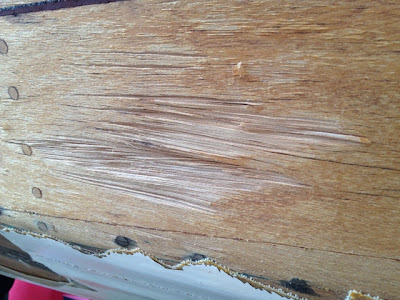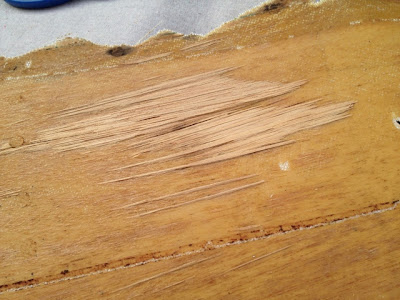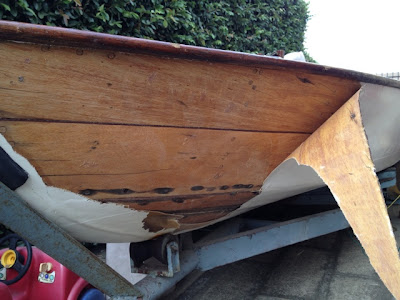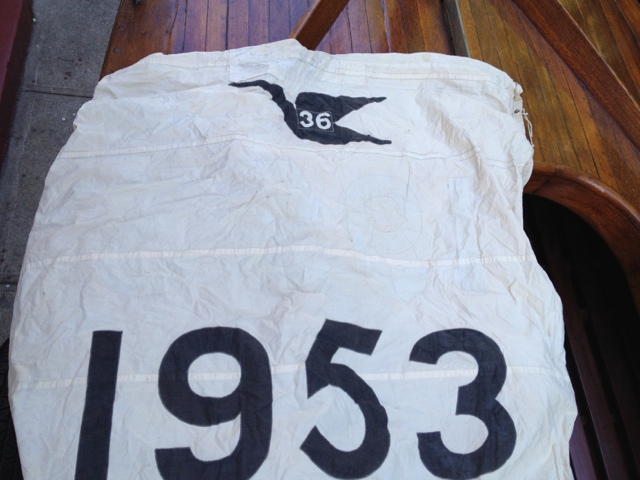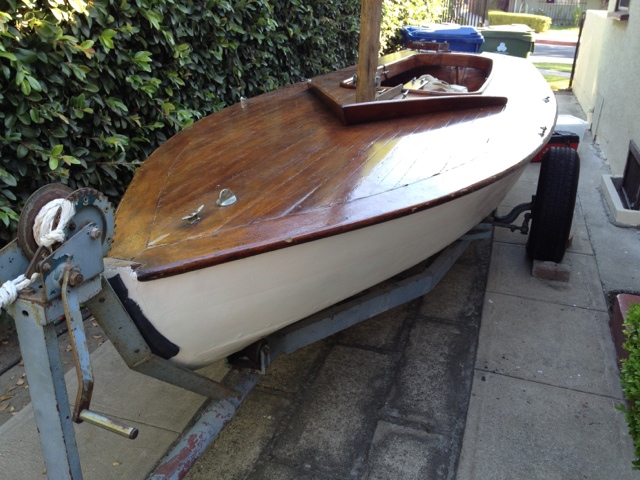But on the Snipe, I'm nowhere close to being finished with the "demolition", but I'm far enough that I've learned a lot about the boat and its condition, and accumulated a lot of questions. Unfortunately, I don't have any pictures, but its been a while since my last post, so I'll trudge forward and will post more photos in the next installment. Now on to the things I think I've learned.
Stripping (3 ways)
No, not that kind, this is the varnish and fiberglass type. the interior of the boat was varnished, and I think its pretty vintage, the entire thing is bubbling inside. The deck was in much better shape, although most of the caulking is a mix of original caulk intermingled with modern latex stuff. So I believe that the deck was varnished about 5-10 years ago without a complete job of re-caulking. Most of the varnish was in decent shape, but I've decided to remove all of the deck varnish and will re-caulk the whole thing.
I did some experimenting with varnish removal methods; two kinds of stripper and the heat gun. The heat gun worked best on the interior varnish that wasn't in good shape, it comes right up with a putty knife (I'm using a window glaziers knife). The heat was tougher on the newer deck varnish, so I'm trying the strippers; Jasco paint and epoxy stripper, and Citristrip. Both of them remove the varnish, Jasco much faster, but the Citristrip smells a lot better! Jury is still out on the winner there.
None of the three methods for stripping are going to help me strip the interior under the foredeck, and my friend Larry from the club suggested, blasphemously, that I should consider removing the deck in order to access the interior to do it right. I'm sure he's right, but it just sounds so painful. Still considering that one; decision #1.
Cursed Screws
as you may recall from the previous photos, there are a bunch of darkened areas around the waterline. John Rose, Wooden Snipe Guru from Seattle, commented that the dark areas were from due to steel screw hull fasteners.
I pulled out a magnet to check John's assertion, and sure enough, they are steel. Bummer. The good news is that the decking screws are bronze silicon, and are all in great shape, despite about 20% of them having no bungs, only covered with caulk. But should I completely refasten all the planks? i.e., even the fasteners that have not started to rust? Ouch; Decision #2
If I do refasten, I've read that the best way to back out fasteners is with a brace and a screw bit, assuming any head remains. Anybody know where to find the bit? I assume Ebay is one option, but anyplace sell new ones? (I already have a brace)
John mentioned having to drill out the rusted screws, dowel the holes, and then refasten, but how does one drill out a rusty old screw without sliding off on side or the other and tearing out the wood (which may not matter if that rust has damaged it).
Oddly, despite the bronze screws in the deck, the deck trim around the gunwale was also fastened with steel screws... double bummer. But this may make decision #1 less painful to make, if I have to remove those deck planks anyway to refasten. Decision #3
Oil Massage
One of the first things I stripped was the little outboard hatch at the stern. I've been using it as a tester for tools and methods for stripping, reefing the seams, and testing some finish options.
 |
| Here is the hatch, before oiling (apres oil pic to follow) |
To recap for those following at home:
- Remove the deck in order to strip and re-varnish under the foredeck?
- Refasten all the planks on the hull?
- Refasten all the Gunwale deck planks that are fastened with Steel?
- Oil the deck/hull prior to varnishing? and if so, with what?










